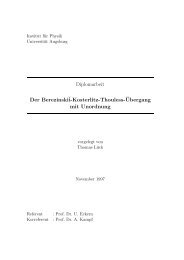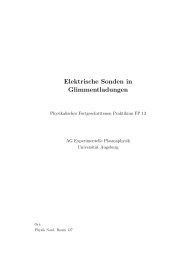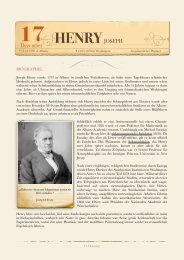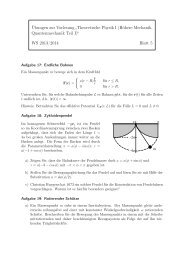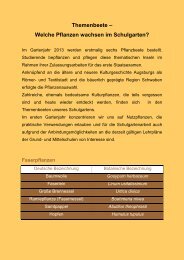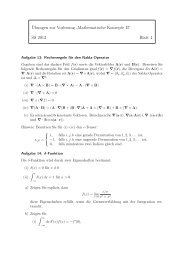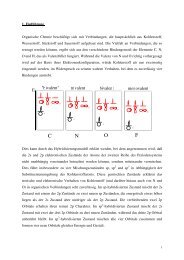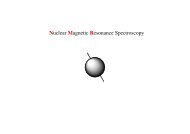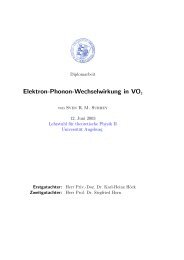Driven Quantum Systems - Institut für Physik
Driven Quantum Systems - Institut für Physik
Driven Quantum Systems - Institut für Physik
You also want an ePaper? Increase the reach of your titles
YUMPU automatically turns print PDFs into web optimized ePapers that Google loves.
266 <strong>Driven</strong> <strong>Quantum</strong> <strong>Systems</strong><br />
for the description of optical properties such as the dipole moment. We have for the<br />
expectation<br />
µ(t) =tr{ϱ TLS σ x } =tr{ϱ T σ z }, (5.92)<br />
where ϱ ... is the density matrix in the corresponding representation. Note that a static<br />
asymmetry energy can be included if the field assumes a static component, i.e. λ sin(ωt+<br />
φ) → λ sin(ωt + φ)+λ 0 .<br />
Explicit results for the time-periodic Schrödinger equation require numerical methods,<br />
cf. Sect. 5.5, one must solve for the quasienergies ɛ αn and the Floquet modes<br />
Ψ αn (x, t). Without proof we state here some results that are very important in discussing<br />
driven tunneling in the deep quantum regime. For example, Shirley [11] already<br />
showed that in the high-frequency regime ∆ ≪ max[ω, (λω) 1/2 ] the quasienergies obey<br />
the difference<br />
ɛ 2,−1 − ɛ 1,1 =¯hω 0 J 0 (4λ/ω), (5.93)<br />
where J 0 denotes the zeroth order Bessel function of the first kind. The sum of the two<br />
quasienergies obeys the rigorous relation [11]<br />
ɛ 2n + ɛ 1k = E 1 + E 2 =0 (mod¯hω). (5.94)<br />
For weak fields, one can evaluate the quasienergies by use of the stationary perturbation<br />
theory in the composite Hilbert space R⊗T. In this way one finds:<br />
(i) Exact crossings at the parity forbidden transitions where ω 0 =2nω, n =1,2,...,<br />
so that<br />
ɛ 2,1 =0 (mod¯hω). (5.95)<br />
(ii) At resonance ω = ω 0 :<br />
ɛ 2,1 = ± 1 2¯hω 0<br />
(<br />
1+ 2λ √<br />
)<br />
1−λ<br />
ω 2 /4ω0<br />
2<br />
0<br />
(mod ¯hω). (5.96)<br />
(iii) Near resonance, one finds from the RWA approximation readily the result<br />
ɛ 2,1 = ± 1 (<br />
2¯hω 1+ Ω )<br />
(mod ¯hω), (5.97)<br />
ω<br />
where Ω denotes the Rabi frequency in (5.87). Correcting this result for counterrotating<br />
terms, an improved result, up to order O(λ 6 ), reads [27]<br />
ɛ 2,1 = ± 1 (<br />
2¯hω 1+ ¯Ω )<br />
(mod ¯hω), (5.98)<br />
ω<br />
with the effective Rabi frequency ¯Ω<br />
¯Ω 2 = δ 2 + 8ω 0λ 2<br />
(ω + ω 0 ) − 8ω 0λ 4<br />
(ω + ω 0 ) 3 . (5.99)



